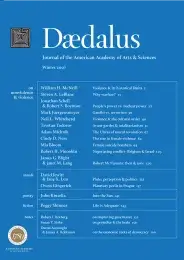Pluto, perception & politics
Last summer, in Prague, members of the International Astronomical Union (IAU) voted to remove Pluto from the list of planets. It is not a major planet like our own Earth, or Mars, or Jupiter, they declared; it is instead a ‘dwarf planet’ along with several other diminutive but approximately round bodies in orbit about the sun. Apparently adding insult to injury, the IAU’s Minor Planet Center promptly assigned Pluto a number, as they routinely do for run-of-the-mill asteroids. From now on, Pluto is 134340.
Pluto’s loss of planetary status, while pleasing to the many astronomers who have long viewed Pluto as a planetary usurper, has enraged others. Dark rumors of a revolution at the IAU swirl on the Internet, and pro-Pluto political action groups have formed. Pluto’s reclassification has also bemused science writers and the general public, many of whom believe planethood is Pluto’s right, not to be cruelly snatched away by mean-spirited astronomers. The dusty world of the IAU has never been racked by so much controversy.
Astronomers will study Pluto just the same whatever it is called: a planet, an ex-planet, or a dwarf–it doesn’t matter. In this sense, Pluto’s removal from the list of planets is inconsequential. So what is behind the abnormally high level of interest and, in some quarters, the almost pathological passion aroused by Pluto’s reclassification?
It turns out that the answer to this question is deep. The reaction to Pluto’s demotion tells us little about Pluto, but a lot about the public perception of science, and about the role of politics and public relations in modern planetary astronomy.
Astronomers have known since 1992 that Pluto is not alone. It orbits the sun along with a vast number of cohorts in the frozen realms beyond Neptune. This region, now widely known as the Kuiper Belt, contains bodies consisting mostly of ice and rock, like dirty snowballs trapped in the solar system’s deep freeze. More than a thousand Kuiper Belt objects (KBOs) have been identified as a result of prodigious search efforts. Based on these discoveries, we can predict some seventy thousand KBOs larger than 100 kilometers in size, and tens, even hundreds, of millions of KBOs measured down to 1 kilometer in size. The new discoveries show that the Kuiper Belt is a ring-like assemblage of bodies extending roughly from Neptune’s orbit at 30 astronomical units (AU; 1 AU is the average distance between the Earth and the sun) to at least 1000 AU.
The Kuiper Belt has immediately emerged as a new frontier in astronomy, scientifically important on several different levels. It turns out that the Belt is the source of many of the comets that intermittently grace Earth’s skies. More significantly, it is a vast repository of icy bodies left over from the solar system’s formation 4.5 billion years ago, and its study promises to tell us much about the way in which the solar system formed and evolved. With the discovery of the Kuiper Belt, it became clear that Pluto was more usefully viewed as a large KBO than as a planet. Most astronomers have recognized since 1992 that Pluto’s earlier classification as a planet was a mistake, but the message has been poorly received by the wider public.
The first objects discovered in the Kuiper Belt were a few hundred kilometers in diameter, tiny compared to Pluto, which is 2300 kilometers in diameter. But it did not take long for larger bodies to be identified. By the turn of the century, objects fully 1000 kilometers in diameter were being discovered with regularity. Starting in 2000, press reports began to tout the applicability of the term ‘planet’ to these objects with 2000 WR106 (Varuna; some 600 to 900 kilometers in diameter); then 2001 KX76 (Ixion; 800 kilometers); then 2002 LM60 (Quaoar), 2004 DW, 2003 EL61, and 2005 FY9 (all 1000 to 1300 kilometers). The straw that broke the planetary camel’s back was 2003 UB313 (Eris), a KBO whose diameter is the same as Pluto’s within the uncertainties of measurement. The point of all these discoveries was clear: Pluto is not alone. The press release announcing Eris, however, advertised it as “the tenth planet,” a label that many in the press and the public accepted uncritically. But describing Eris as the tenth planet presupposes that Pluto is the ninth planet–and this had already been a controversial assertion for many years. . . .
To read the full essay, access the PDF of the volume.
